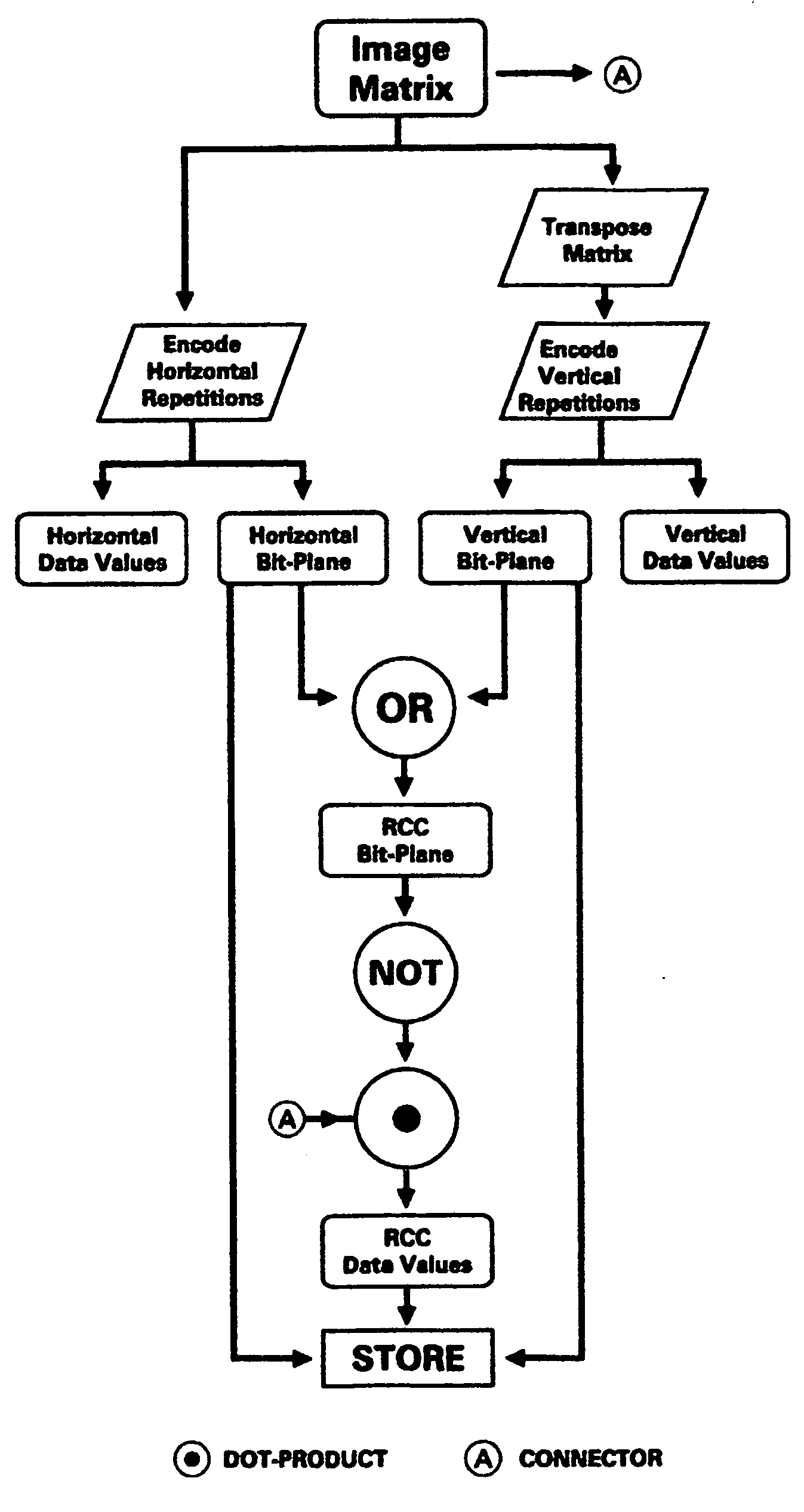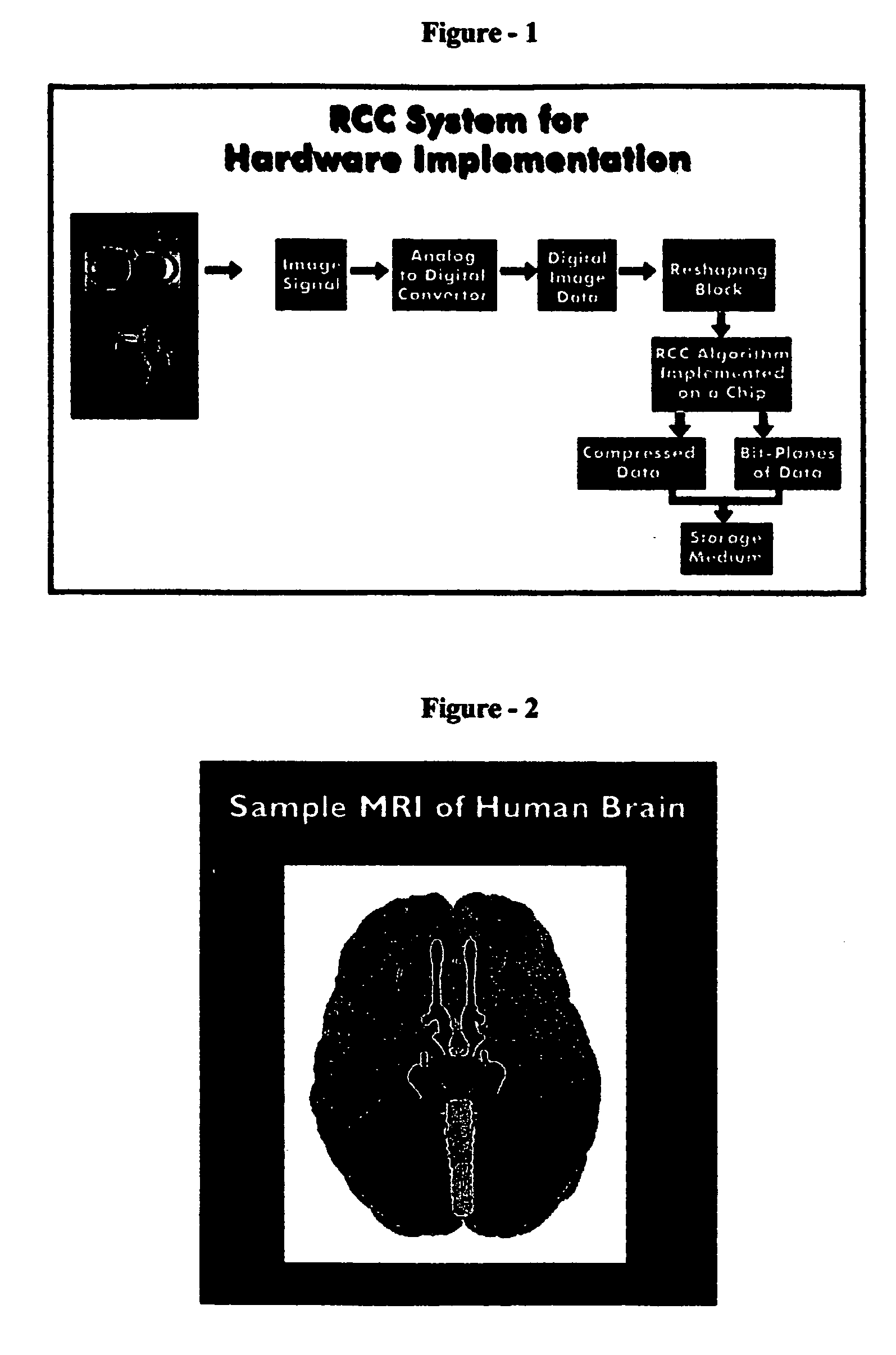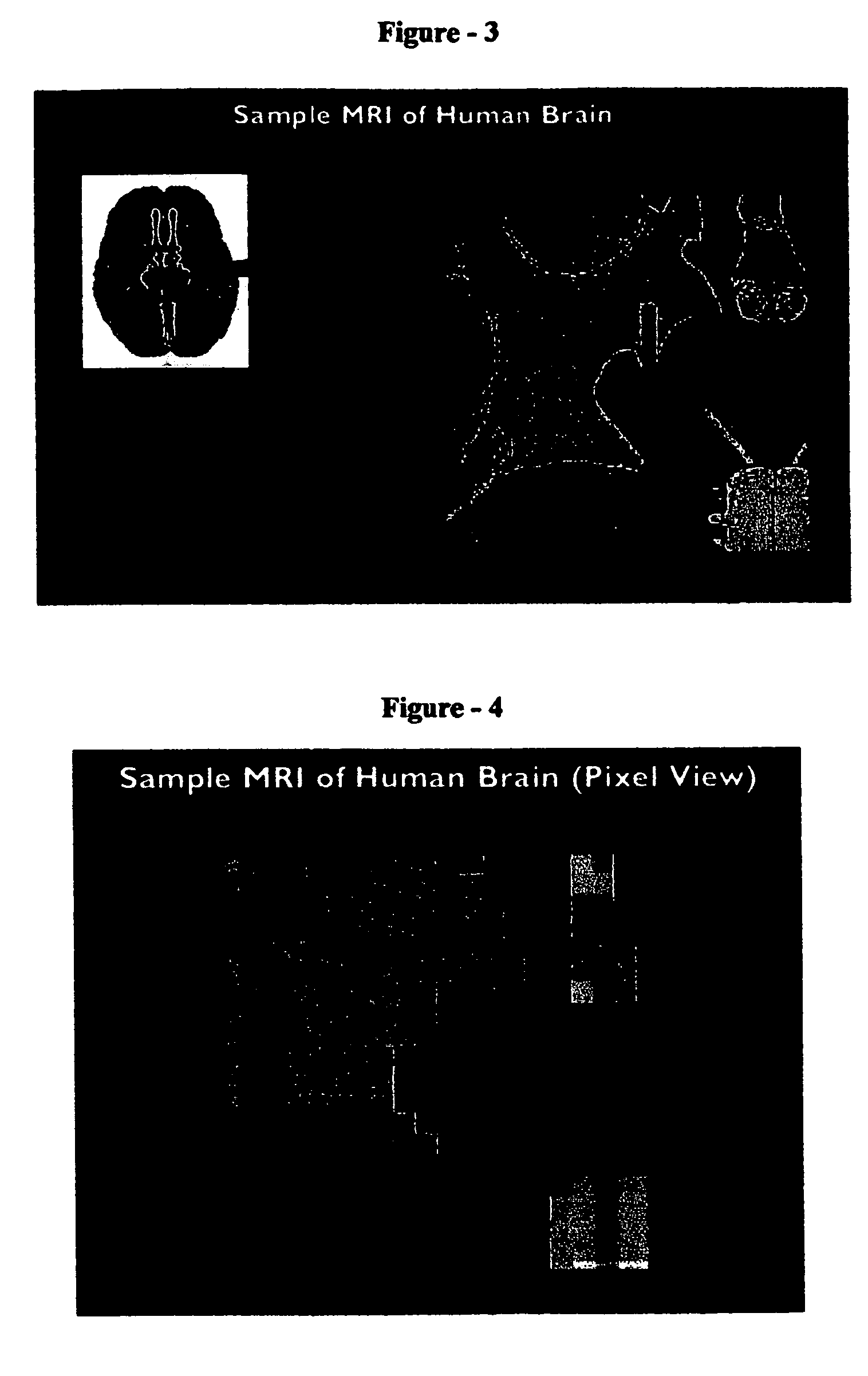Repetition coded compression for highly correlated image data
a compression system and image data technology, applied in image data processing, sensors, diagnostics, etc., can solve the problems of high complexity of image compression system, system and power consumption, and inability to perfectly reverse the process, so as to increase the compression ratio, increase the number of repetitions, and increase the threshold
- Summary
- Abstract
- Description
- Claims
- Application Information
AI Technical Summary
Benefits of technology
Problems solved by technology
Method used
Image
Examples
Embodiment Construction
[0057] Image data is a highly correlated one. This means that, the adjacent data values in an image are repetitive in nature. So, if it is possible to achieve some compression out of this repetitive property of the image and then apply Huffman coding or other source coding schemes, the method would be very efficient.
[0058] In this Repetition Coded Compression algorithm, each element is compared with the previous element. If both of them are equal then a value of ‘1’ is stored in a Bit-plane. Otherwise a value of ‘0’ is stored in the Bit-plane. This different value is only stored in a matrix instead of storing all the repeating values.
[0059] In one-dimensional RCC Method only one bit-plane is used to code the repetition in the horizontal direction.
[0060] But in two-dimensional RCC method, two bit-planes are used to code the repetitions in both the horizontal and the vertical directions. This is more efficient and gives a better compression ratio.
[0061] This clearly proves that th...
PUM
 Login to View More
Login to View More Abstract
Description
Claims
Application Information
 Login to View More
Login to View More - R&D
- Intellectual Property
- Life Sciences
- Materials
- Tech Scout
- Unparalleled Data Quality
- Higher Quality Content
- 60% Fewer Hallucinations
Browse by: Latest US Patents, China's latest patents, Technical Efficacy Thesaurus, Application Domain, Technology Topic, Popular Technical Reports.
© 2025 PatSnap. All rights reserved.Legal|Privacy policy|Modern Slavery Act Transparency Statement|Sitemap|About US| Contact US: help@patsnap.com



